Janina Fels
Audiovisual angle and voice incongruence do not affect audiovisual verbal short-term memory in virtual reality
Oct 30, 2024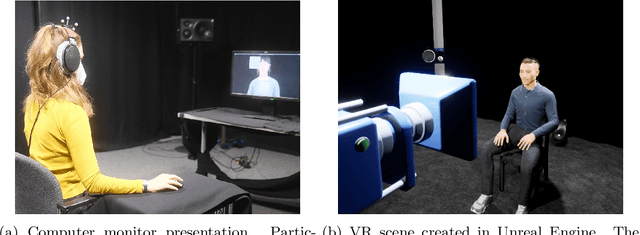
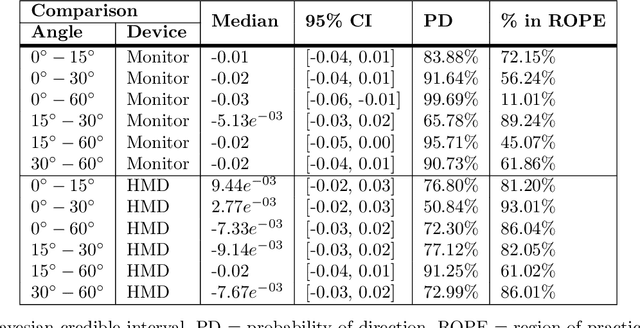
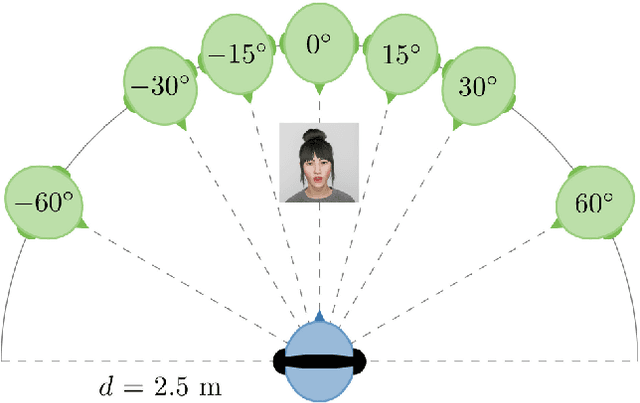

Abstract:Virtual reality (VR) environments are frequently used in auditory and cognitive research to imitate real-life scenarios, presumably enhancing state-of-the-art approaches with traditional computer screens. However, the effects of different display technologies on audiovisual processing remain underexplored. This study investigated how VR displayed with an head-mounted display (HMD) affects serial recall performance compared to traditional computer monitors, focusing on their effects on audiovisual processing in cognitive tasks. For that matter, we conducted two experiments with both an HMD and a computer monitor as display devices and two types of audiovisual incongruences: angle (Exp. 1) and voice (Exp. 2) incongruence. To quantify cognitive performance an audiovisual verbal serial recall (avVSR) task was developed where an embodied conversational agent (ECA) was animated to speak the target digit sequence. Even though subjective evaluations showed a higher sense of presence in the HMD condition, we found no effect of the display device on the proportion of correctly recalled digits. For the extreme conditions of angle incongruence in the computer monitor presentation the proportion of correctly recalled digits increased marginally, presumably due to raised attention, but the effect is likely too small to be meaningful. Response times were not affected by incongruences in either display device across both experiments. These findings suggest that the avVSR task is robust against angular and voice audiovisual incongruences, irrespective of the display device, at least for the conditions studied here. Hence, the study introduces the avVSR task in VR and contributes to the understanding of audiovisual integration.
Cognitive performance in open-plan office acoustic simulations: Effects of room acoustics and semantics but not spatial separation of sound sources
Jun 13, 2023



Abstract:The irrelevant sound effect (ISE) characterizes short-term memory performance impairment during irrelevant sounds relative to quiet. Irrelevant sound presentation in most ISE studies has been rather limited to represent complex scenarios including open-plan offices (OPOs) and not many studies have considered serial recall of heard information. This paper investigates ISE using an auditory-verbal serial recall task, wherein performance was evaluated for relevant factors for simulating OPO acoustics: the irrelevant sounds including speech semanticity, reproduction methods over headphones, and room acoustics. Results (Experiments 1 and 2) show that ISE was exhibited in most conditions with anechoic (irrelevant) nonspeech sounds with/without speech, but the effect was substantially higher with meaningful speech compared to foreign speech, suggesting a semantic effect. Performance differences in conditions with diotic and binaural reproductions were not statistically robust, suggesting limited role of spatial separation of sources. In Experiment 3, statistically robust ISE were exhibited for binaural room acoustic conditions with mid-frequency reverberation times, T30 (s) = 0.4, 0.8, 1.1, suggesting cognitive impairment regardless of sound absorption representative of OPOs. Performance differences in T30 = 0.4 s relative to T30 = 0.8 and 1.1 s conditions were statistically robust, but not between the latter two conditions. These results suggest that certain findings from ISE studies with idiosyncratic acoustics may not translate well to complex OPO acoustic environments.
Sound in occupied open-plan offices: Objective metrics with a review of historical perspectives
Apr 14, 2023
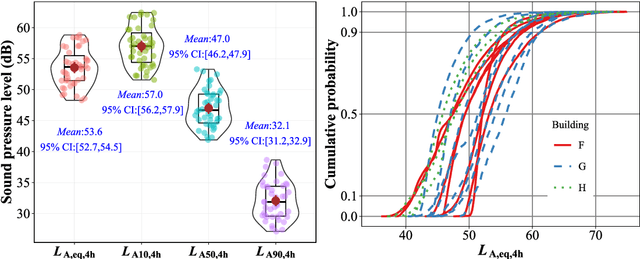
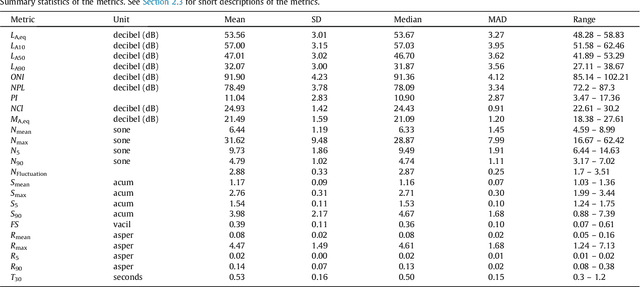
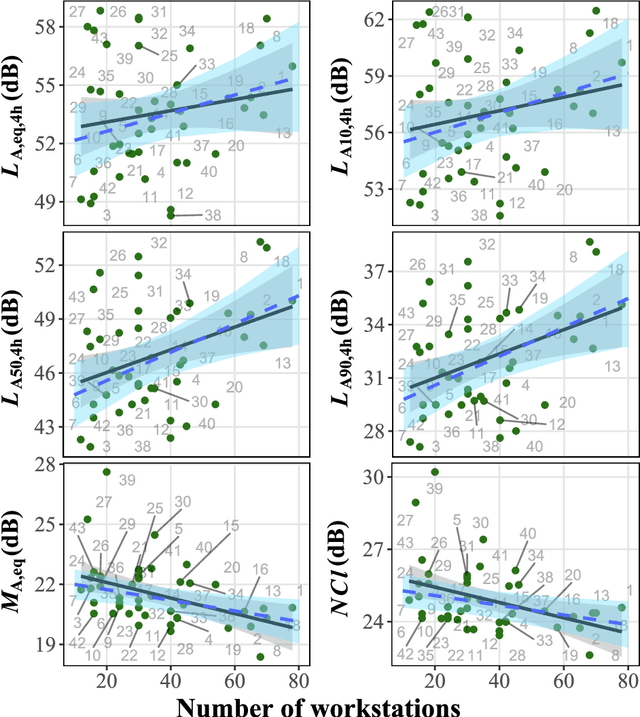
Abstract:Open-plan offices (OPOs) have been around for more than half a century now, chronicling the vicissitudes of workplace topography amongst other factors. This paper addresses one such factor - the sound environment in occupied OPOs in relation to several objective workplace parameters, using measurements in contemporary OPOs and comparisons with studies over the last 50 years. Omnidirectional and binaural sound measurements were conducted in 43 offices during typical working hours. The results describe variation in several acoustic and psychoacoustic metrics, and present statistical models that predict these metrics as a function of the number of workstations in offices. LA,eq of 53.6 dB is typical for occupied OPOs, with spectral slope of approximately -4 dB/octave. LA,eq values do not vary much over the workplace parameters studied (e.g., floor plate area, work activity, etc), except for -2.7 dB and -4.1 dB differences between offices with/without carpeting, and offices with ceiling absorption but with/without carpeting, respectively; most likely from reduced floor impact noise leading to speech level reduction. Sound fluctuation, as characterised by the metric Noise Climate (NCl: LA10 - LA90) and the psychoacoustic Fluctuation Strength (FS), decreases significantly with increasing number of workstations in OPOs. This suggests lesser auditory distraction in larger offices, which needs further investigation. In terms of historical trends, OPOs have become quieter over the years, especially background noise quantified as LA90, although there are several subtleties. Overall, current findings can inform several OPO design perspectives including policy documents, provide values for laboratory simulations of OPO acoustic environments, help interpret subjective impressions of OPO occupants, etc.
 Add to Chrome
Add to Chrome Add to Firefox
Add to Firefox Add to Edge
Add to Edge